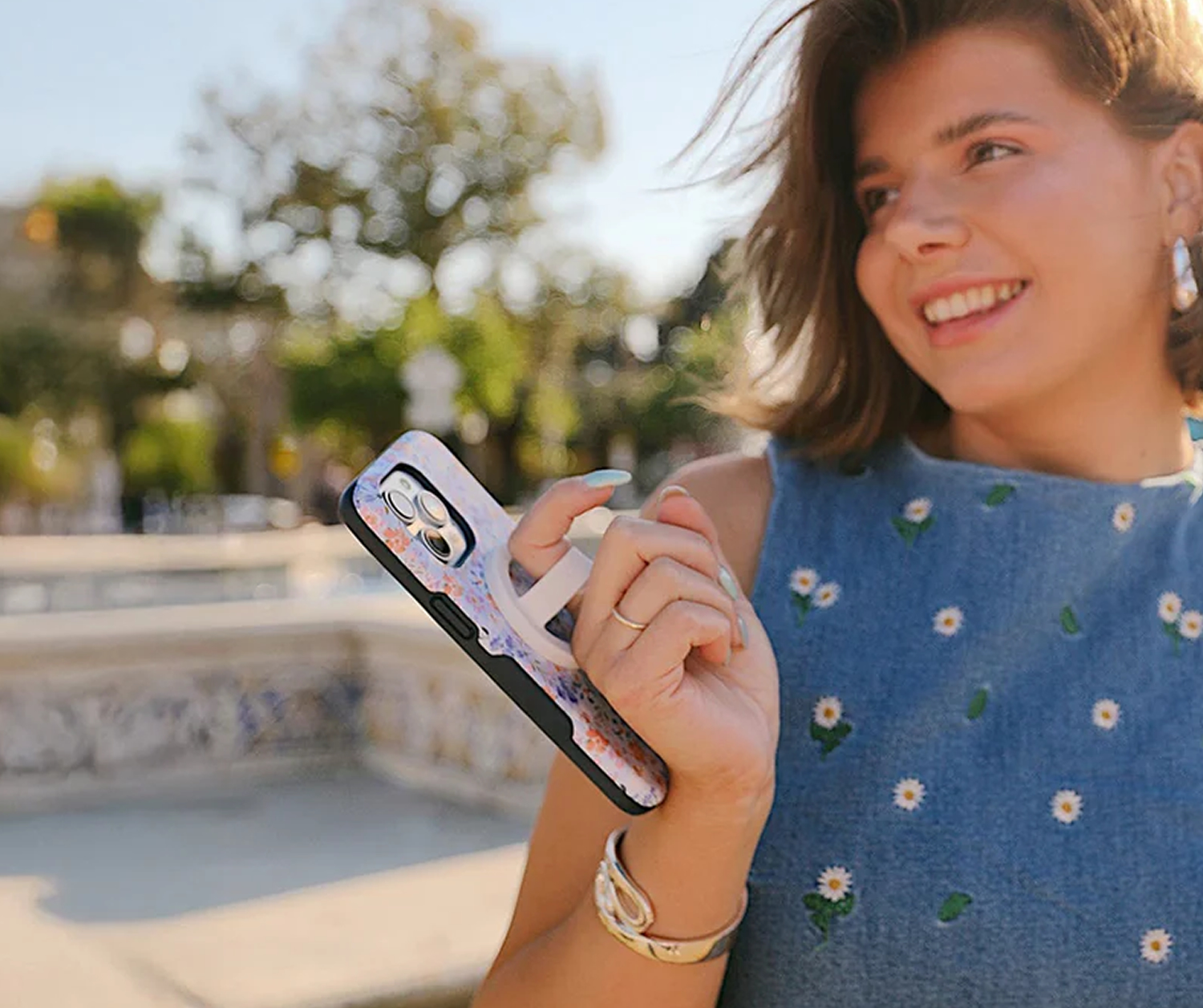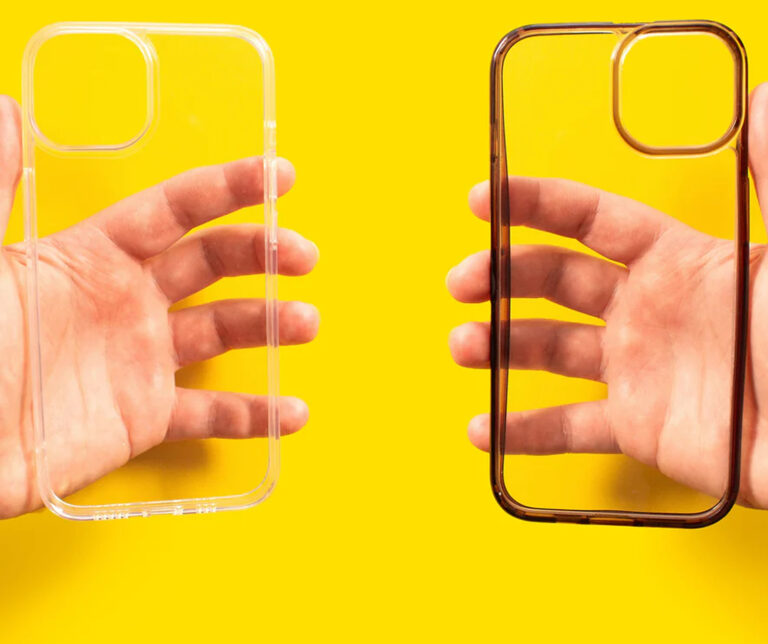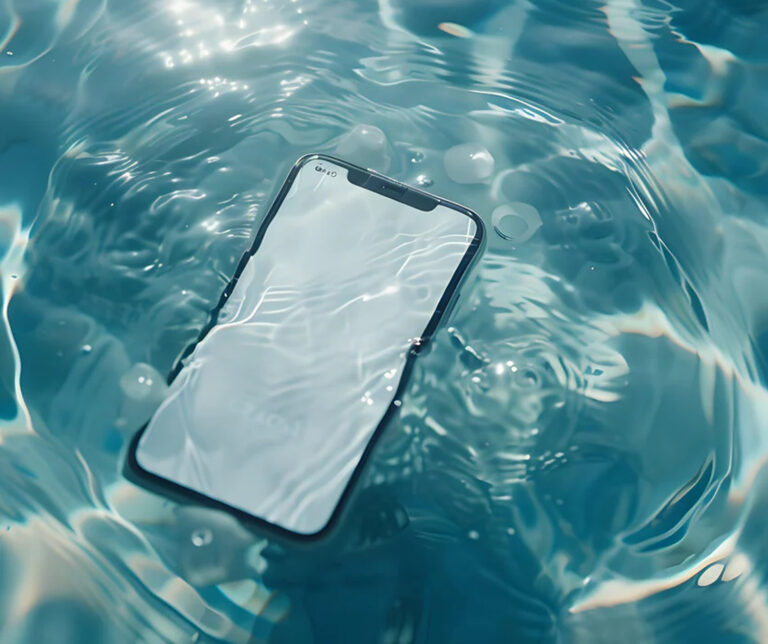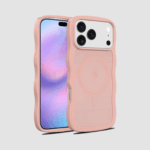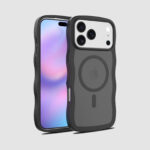Summer Sale: 40% OFF sitewide | Free standard shipping
Given modern smartphones’ high cost and value, investing in protective equipment is a must. After all, paying a small amount for an accessory can help ensure you don’t spend a large amount replacing your device.
Many phone accessories exist to help prevent your device from slipping out of your hands, the most popular being grip rings and phone grips. These phone grips help secure your device to avoid potential screen-shattering drops.
Phone rings and phone grips have become increasingly popular accessories for safety and convenience, but you may wonder which is best for you. Let’s take a look at the differences between the two types of phone grips and decide which one to choose.
What Are Phone Rings For?
Main Features
Phone rings are used to securely hold your device and prevent slippage by threading a finger through the ring. The ring can also be used as a phone stand for hands-free viewing. It offers a 360-degree swivel and 180-degree flip to accommodate any angle.
Design
Phone rings are often made of metal or plastic, allowing you to slip a finger through for a secure hold. They lie flat against the device when not in use to reduce bulkiness. These rings use an adhesive backing to secure themselves to your device or adhere magnetically with MagSafe technology. They can often be removed and reapplied, though the adhesive effectiveness can diminish over time.
Pros and Cons
Pros
- Durability: Grip rings are often made from strong materials such as metal, ensuring they last a long time.
- 360-degree Rotation: A 360-degree swivel allows you to comfortably hold your device at various angles.
- Natural Grip: Phone rings permit you to slip one finger securely across the back of your device, mimicking a more natural way of holding your device.
- Support: Threading your finger through the ring adds an extra layer of support. If your device were to slip, the ring would catch on your finger and prevent the device from dropping.
- Multi-purpose: Grip rings are designed to act as a phone stand, supporting horizontal viewing.
Cons
- Finger Wear: Phone rings can cause discomfort on the finger if used for extended periods.
- Wireless Charging Interference: Grip rings interfere with wireless charging capabilities and must be removed for your device to charge this way.
- Customization: Customization on grip rings is limited compared to PopSockets.
- Compatibility: Phone rings may not adhere to cases of certain textures or materials.
What About Phone Grips?
Main Features
Phone grips allow you to slip your fingers between your device and the end of the grip, adding a layer of security to prevent your grip from dropping. They also serve as a phone stand to accommodate horizontal use.
Design
Phone grips are collapsible, disc-shaped grips available in numerous colors and designs. They stick to the back of devices using an adhesive, or attach magnetically to those with MagSafe technology. Using an accordion-like design, they extend to accommodate your grip.
Pros and Cons
Pros
- Stability: Phone grips allow for a more stable hold to prevent slippage and reduce camera shake.
- Multi-purpose: Phone grips allow for a secure grip and double as a phone stand.
- Collapsible: You can collapse the phone grip so it sits flat against your grip, which makes it easy to carry.
- Customizable: Several customizations and designs allow you to express your personality with a phone grip.
Cons
- Adhesive: Phone grips are adhered with adhesive, which can leave a sticky residue when removed and become weaker over time.
- Longevity: The accordion-style retraction loses effectiveness the more it’s used, and the top of the grip can fall off, causing a drop that it was meant to prevent. It doesn’t help that popping and collapsing the grip is a fun way to fidget.
- Compatibility: Phone grips may not secure well to cases made of certain materials or textures.
- Wireless Charging Interference: Phone grips prevent wireless charging and must be removed to enjoy your device’s wireless charging capabilities.
- Bulkiness: Though collapsible, phone grips can still be bulky enough to be felt in your pocket. In addition, the accordion-style design promotes easy extension, meaning the grip can extend when you don’t want it to.
Are Phone Grips Still Relevant?
Phone grips rose into stardom overnight, with seemingly everybody sporting the small discs on the back of their devices. Over time, however, and with the introduction of phone rings, grips have lost their spark, raising the question of whether or not they were a fad.
While phone grips have dwindled in popularity, they still provide a necessary service: grip support. Everyone has dropped their smartphone before and knows how scary it is to pick it up, hoping the screen is still intact. Phone grips help curb this issue, and designers have found fun ways to tackle it with various customization options.
Phone rings provide the same service as phone grips but aim to do it more effectively. While grips allow a firmer hold, they’re still prone to slipping. On the other hand, phone rings do a much better job of preventing slips because they are wrapped around a finger.
Phone rings also aim to make better use of the phone stand capabilities of phone grips. While phone grips can be used as a makeshift stand, phone rings have a dedicated part of their design to ensure your device can be supported securely.
Frequently Asked Questions
What Are the Disadvantages of a Phone Grip?
The accordion-style functionality of phone grips can result in unwanted extension and eventually lose effectiveness. Phone grips require two fingers to secure a firm hold, which can feel uncomfortable to some users. They can look and feel bulky, even when collapsed.
What’s Better, Grip or Ring?
Deciding between phone grips and rings depends on preference. Both offer a secure grip, but grips can be uncomfortable for some users, and phone rings can cause discomfort if used for too long. Phone grips boast greater customization and variety, while rings deliver more functionality and support.
Final Thoughts
Phone grips and phone rings both provide an essential service: a secure grip. Grips require two fingers to secure your device, while phone rings allow you to do so with just one, encouraging a more natural hold.
Phone rings also accommodate various angles with their 360-degree swivel and 180-degree flip. Their phone stand design supports horizontal viewing much more securely than a grip’s makeshift phone stand design. While grips tend to have more customization options, that doesn’t mean there isn’t a phone ring for you. Explore Casezao’s phone rings to find the perfect fit.
